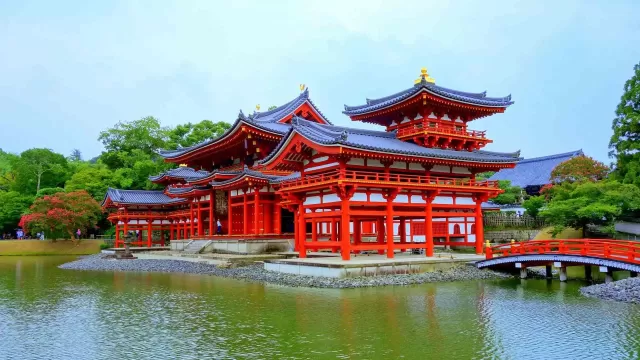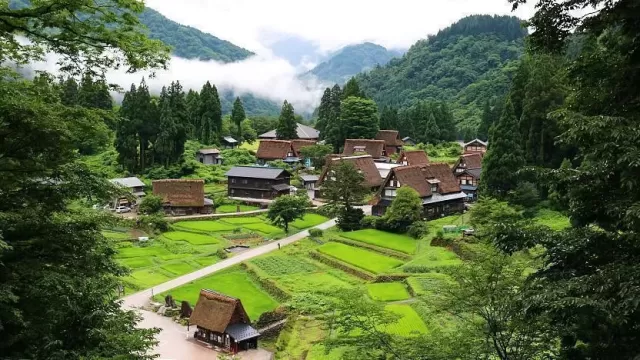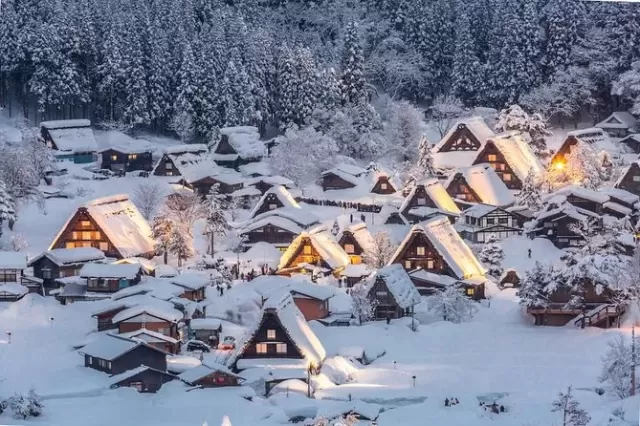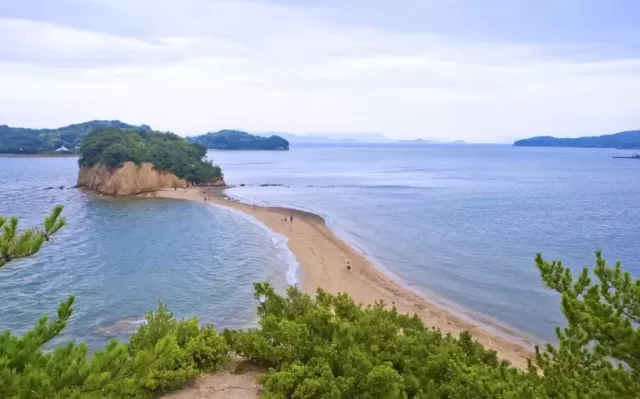Español
Discover Japan: 10 Hidden Treasures That Will Surprise You

Japan is a breathtaking destination, a country where the harmony between the ancient and the futuristic creates a unique experience. From the illuminated skyscrapers of Tokyo to the serene temples of Kyoto, Japan captivates with its striking contrasts, offering both the tranquility of its natural landscapes and the vibrant energy of its metropolises. This selection of destinations captures precisely that duality: the timeless beauty of its forests, mountains, and gardens, alongside the majesty of its traditional buildings, where every corner tells its own story.
The Blue Pond of Shirogane

This artificial pond near Mount Tokachi looks like something out of a dream. Its intense blue color—ranging from turquoise to emerald to cobalt—is due to naturally occurring minerals dissolved in the water from Shirahige Falls. Tree trunks emerging from the surface add a surreal touch. Created to control erosion, its appearance changes with the seasons, wind, and rain. It is especially striking at sunrise.
Hitachi Coastal Park (Ibaraki)

In this 350-hectare coastal park, Miharashi Hill is the star attraction. In spring (April-May), it's blanketed in a sea of blue nemophila flowers that mimic the sky. In autumn (October), those same slopes blaze with the red of kokia blossoms. Beyond the flowers, you'll find nature trails in Hitachinaka Forest, dune gardens with native flora, and even an amusement park. Suisen Garden, bursting with daffodils in March, is another hidden gem.
Gokayama (Toyama/Gifu)

A UNESCO World Heritage Site alongside Shirakawa-go, this remote valley preserves traditional gassho-zukuri houses. Their steeply pitched thatched roofs—designed to withstand extreme snowfall—create a fairytale landscape. The key difference: here, the atmosphere is more tranquil and authentic. Being less accessible, you avoid the crowds and connect with rural Japanese life from centuries past.
Shirakawa-gō (Gifu)

Just 40 minutes from Gokayama, this sister village is also a UNESCO World Heritage Site. Its gassho-zukuri houses, some 250 years old, are masterpieces of traditional engineering: built without nails, with beams that fit together like a jigsaw puzzle. The name ("prayer hands") describes their roofs, which withstand tons of snow in winter. Visit in January to see it blanketed in snow, or in April amidst the cherry blossoms.
Fukuoka (Kyushu)

This coastal city blends Japanese and Korean influences. Explore the ruins of Fukuoka Castle in Maizuru Park, then wait until dusk: the 234-meter-tall Fukuoka Tower is illuminated with 8,000 mirrors, creating a dazzling light show on the sea. Its proximity to South Korea is reflected in its cuisine and vibrant atmosphere.
Arashiyama Bamboo Grove (Kyoto)

In Arashiyama, this bamboo forest offers a unique sensory experience. Walking among its towering green stalks, with the light filtering through them, is mesmerizing. But the most magical thing is the sound: the wind rustling through the bamboo creates a natural "music" that the Japanese consider one of the 100 sounds to be preserved in the country.
Nishinomaru Garden (Osaka)

Located within Osaka Castle Park, this 6.5-hectare garden was once the residence of Toyotomi Hideyoshi's wife. Today, it's a peaceful haven for admiring the castle and its stone walls. In spring, 300 Somei-Yoshino cherry trees transform it into a prime destination for hanami (flower viewing). Don't miss its Hoshoan teahouse.
Tottori Dunes (Tottori)

Japan's largest sand dunes (16 km long, 50 m high) are an unexpected landscape. Formed by sediments from the Sendaigawa River, they are constantly reshaped by wind and tides. From the tops, you have dramatic views of the Sea of Japan. Explore the main area near the visitor center or venture into the arid expanses for a true desert experience.
Nachi Waterfall (Wakayama)

At 133 meters, it is the highest free-falling waterfall in Japan. Considered sacred, it is guarded by the 1,400-year-old Nachi Taisha Shinto shrine. Priests make daily offerings to the kami (spirit) of the waterfall, marked with shide (ritual papers). The combination of natural force and spirituality creates a powerful atmosphere.
Shōdoshima (Seto Inland Sea)

The second largest island in this area dazzles with its Mediterranean charm. It's famous for its olive groves, soy sauce factories, and the Kankakei Gorge, one of the most spectacular in Japan. Tranquil beaches, coastal resorts, and inland mountains round out its appeal. According to Japanese mythology, it was one of the first islands created by the gods.
These ten destinations showcase the purest essence of Japan, where each place—whether an ancient shrine, a breathtaking landscape, or a vibrant city—tells a unique story. Together, they form a mosaic of experiences that reveal the country's cultural depth and natural beauty.
Ready to be captivated by the magic of these places?
